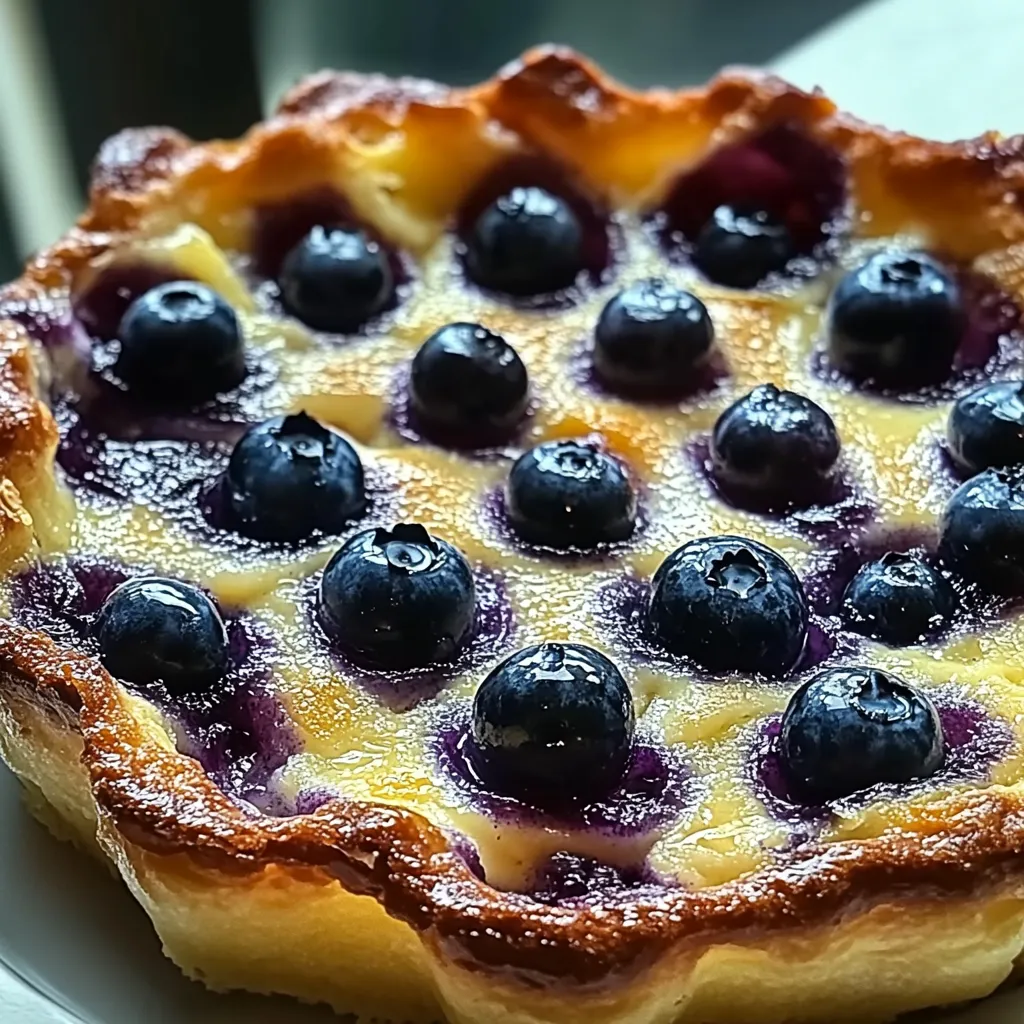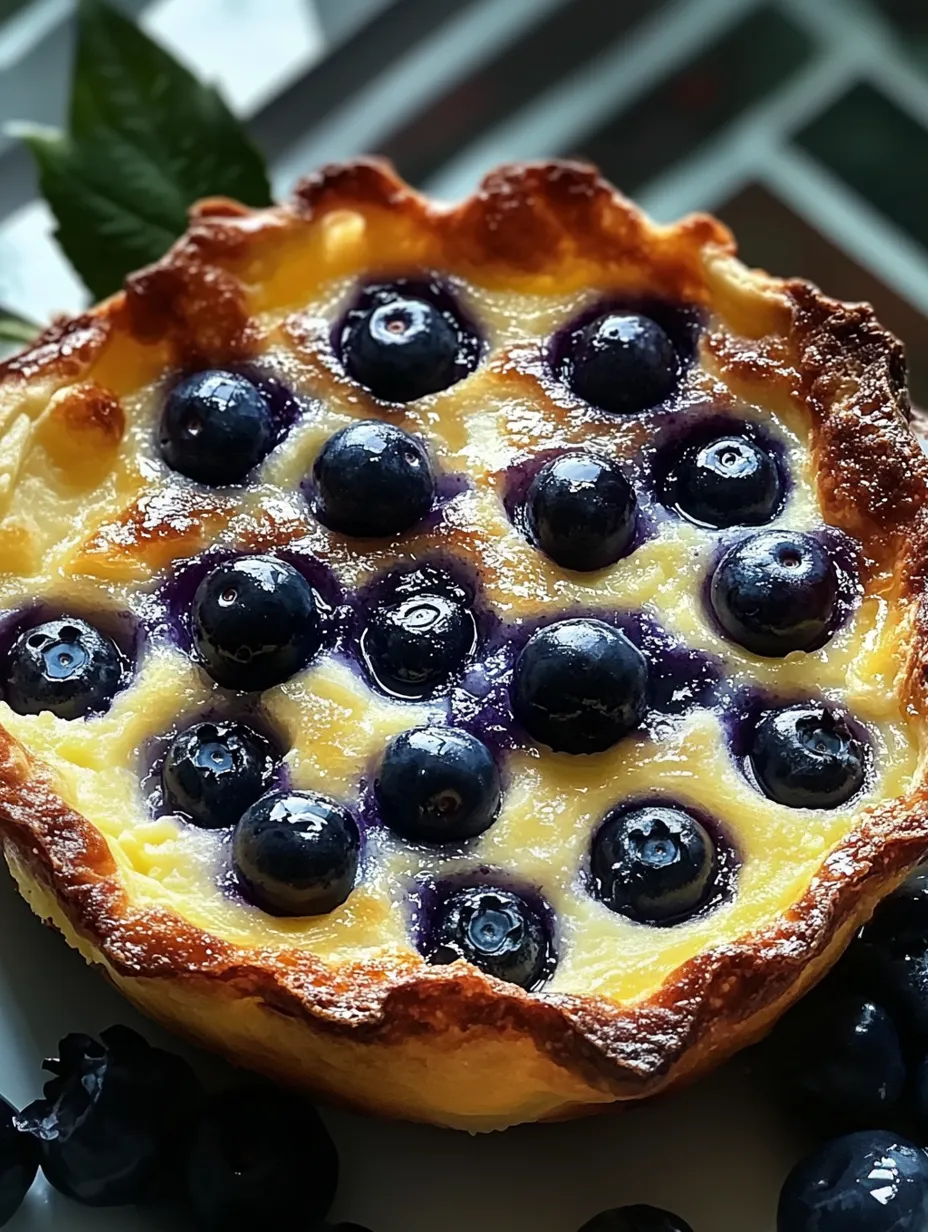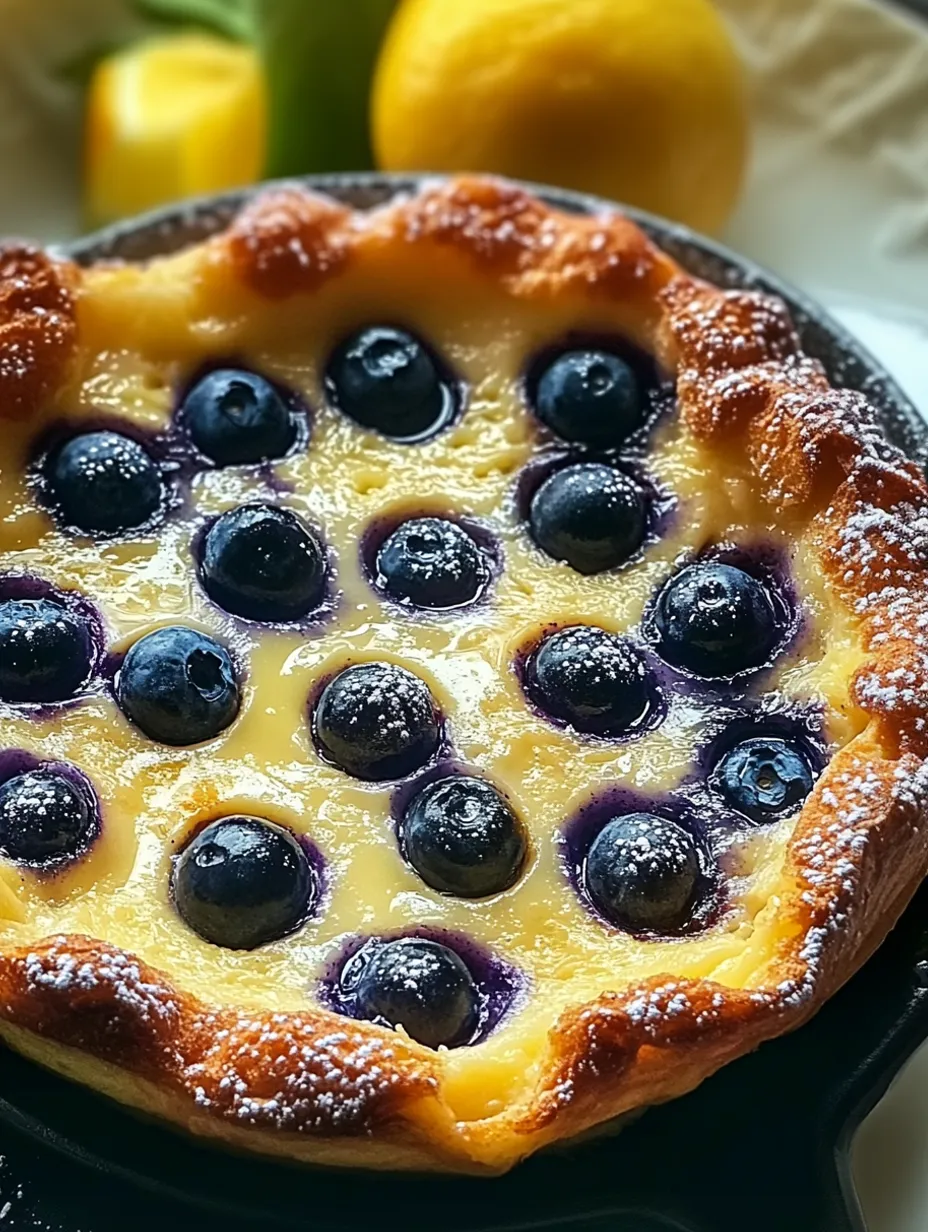 Save
Save
When I need to dazzle breakfast company without breaking a sweat, this blueberry lemon Dutch baby is my secret weapon. This enormous fluffy pancake does the work for you—puffing up dramatically while you enjoy your morning coffee, then settling into a stunning crater filled with custard-like goodness dotted with soft, juicy blueberries. The hint of lemon perfectly balances the sweetness.
I stumbled across Dutch babies when my little ones were small and I got tired of flipping countless regular pancakes at the stove while everyone else ate. The first time I pulled one from the oven, my husband actually said "wow" out loud. That rarely happens, so I've kept making them ever since.
What You'll Need
- Eggs create that impressive puffiness—room temperature ones rise much better than cold ones, as I've found out through trial and error
- Milk creates the custardy center—I typically use whole since that's what we have, but 2% does the job too
- All-purpose flour gives it structure—nothing fancy required here
- Sugar counteracts the tangy berries and lemon—it's mildly sweet, which I think works better for morning meals
- Lemon zest adds freshness to the mix—don't leave this out or the flavor will seem dull
- Fresh blueberries cook down into pockets of jamminess—frozen ones work too but tend to color the batter more
- Butter starts the sizzling process—either salted or unsalted is fine
 Save
Save
How I Make It
Mix the BatterI beat the eggs really thoroughly first—more air means better rising. Then I mix in milk, sugar, vanilla, and salt. I add the flour and lemon zest last, whisking just until the larger lumps are gone. When I'm feeling lazy, I sometimes toss everything in the blender for around 10 seconds instead.
Get That Pan HotI put the cast iron skillet in the oven during preheating to 425°F. Don't skip this part—a hot pan makes all the difference. After the oven signals it's ready, I add the butter and swirl it as it melts. You want it bubbling but not turning brown.
The Quick PourThis step happens rapidly. I dump the batter into the sizzling buttery pan—it typically starts to cook at the edges right away. Then I quickly toss blueberries across the top and rush it back into the oven. The longer it sits out, the less impressive the puff will be.
Hands-Off BakingHere comes the tough part—don't open the oven for at least 15 minutes. My kids always gather to watch it grow through the oven window. It needs about 20-25 minutes total, until the sides climb up the pan edges and turn golden. The middle should look firm but still have a tiny wobble.
The Grand FinaleOnce it's out, everyone watches as it slowly sinks in the middle—that's just what these pancakes do. I sprinkle powdered sugar over it while still hot, and sometimes add a squeeze of fresh lemon juice. What makes it so amazing is the contrast between those crispy edges and the soft center.
My mom didn't get why I loved making these until she stayed over one weekend. She kept saying she liked "regular pancakes better" until she tried this. After two bites, she put her fork down and said, "Guess I've been making pancakes wrong for 70 years." Now she asks for it whenever she visits, pretending she's doing me a favor by requesting it.
How to Serve It
I carry the whole skillet to the table for best effect. Everyone gets a wedge dusted with the classic powdered sugar. My husband covers his in maple syrup, the kids go for whipped cream, and I prefer a spoonful of Greek yogurt with honey. For special occasions, I'll set out small dishes of lemon curd and additional berries.
Shake Things Up
I sometimes switch the fruit based on what's in season—summer peaches turn out amazing, and pears with a bit of cinnamon work wonderfully in autumn. During Christmas time, I swap in orange zest for lemon and sometimes add a splash of Grand Marnier to the mix for fancy brunches.
Saving Leftovers
Truth be told—we rarely have any left. But when we do, I wrap individual pieces and keep them in the fridge. A quick warm-up in the toaster oven (never the microwave—it makes them so rubbery!) brings them back pretty well. Not quite as good as fresh, but still beats most morning options.
 Save
Save
Clever Tips
- When the dough rips while rolling, just push it back together with your fingers—it forgives mistakes easily
- Add a bit of flour on your counter to stop sticking, but too much can make the dough tough
- For prettier slices when cutting the dough circle, cool it for 10 minutes after adding the filling
There was always a friendly competition between my Jewish grandma and Polish grandma over their rugelach recipes. The Jewish version used sour cream instead of cream cheese, while the Polish recipe mixed a hint of cinnamon right into the dough. During family gatherings, both types would show up on the dessert table, and relatives would tactfully take one of each. I eventually created my own version that blends elements from both family recipes—using cream cheese for texture but adding that touch of cinnamon in the dough that my Polish grandma always insisted was essential. Sometimes the finest traditions grow and change while still honoring their roots.
Recipe FAQs
- → Why didn’t my pancake rise much?
- Room temp eggs and milk, a heated pan, and sizzling butter are key for great puff. Cold ingredients or lukewarm pans can stop it from rising properly.
- → Can I make it without cast iron?
- Absolutely! Use any oven-proof pan like a pie dish. Metal cookware usually puffs up better than glass or ceramic.
- → Are frozen blueberries okay to use?
- Yes! Toss them on the batter straight from the freezer. You might just need to bake it a little longer.
- → Can I get the batter ready earlier?
- Sure, mix it up 3–4 hours before and keep it in the fridge. Let it sit out for about 30 minutes before baking to ensure it rises nicely.
- → What fruit works besides blueberries?
- Try peaches, apples, blackberries, or strawberries! If using firmer fruits like apples, cook them in butter and cinnamon first.
- → Why is it called Dutch baby?
- It's not really Dutch! These pancakes come from Germany (Deutsch, not Dutch). The name likely came from mispronouncing 'Deutsch.'
